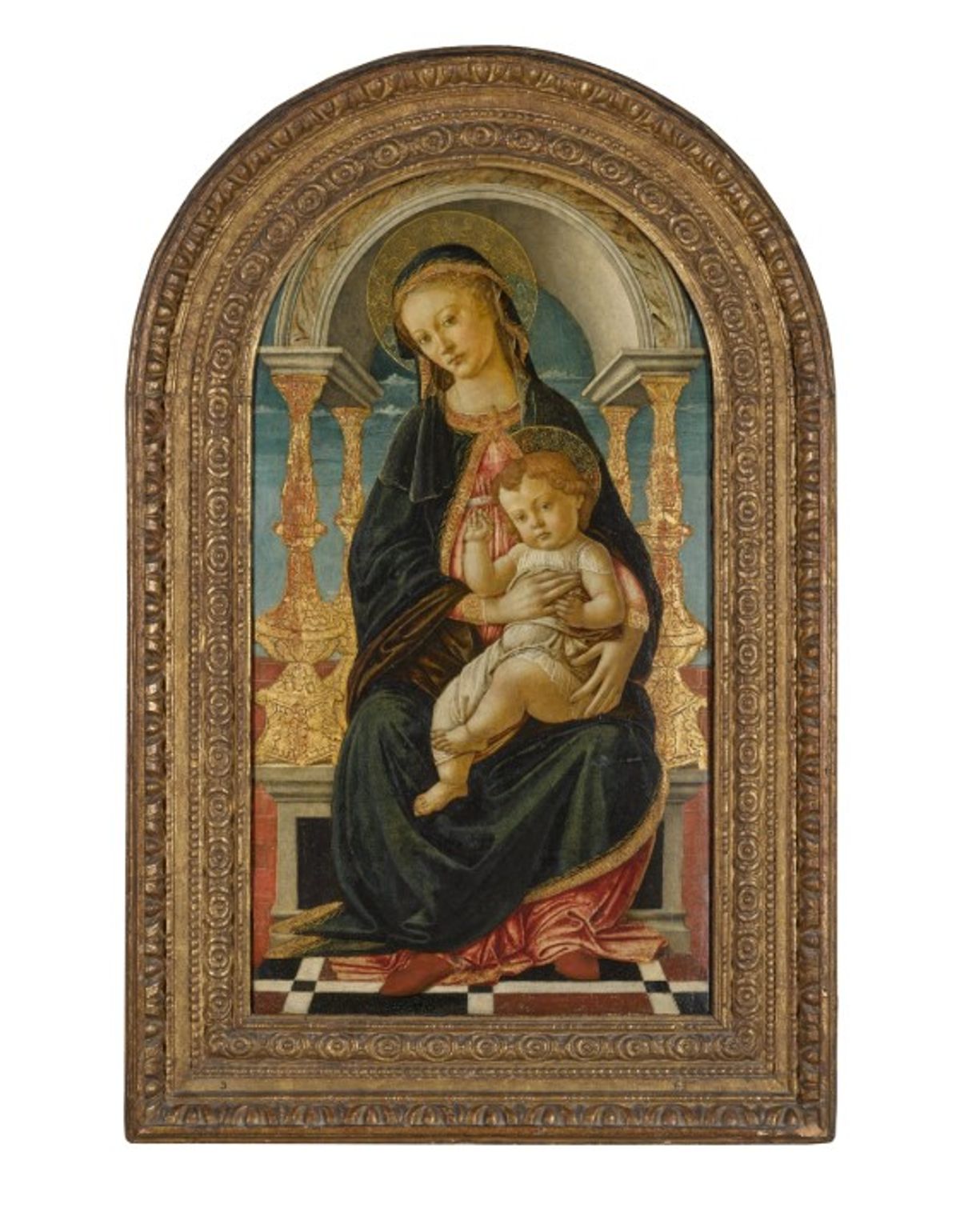The UK government has placed an export bar on a painting of the Virgin Mary by Sandro Botticelli valued at £10.2m. The work, The Virgin and Child Enthroned (1470s), was sold at Sotheby’s London last December for £9.7m (with fees).
The export bar, which allows time for a UK gallery or institution to acquire the painting, will expire on 8 August. The work is otherwise at risk of leaving the UK, unless a domestic buyer can be found to save it for the nation. The Department for Culture, Media and Sport (DCMS) says the painting has a recommended price of £9,960,000 (plus VAT of £272,000, which can be reclaimed by an eligible institution).
In the early 19th century the painting was housed in the Convent of San Giuliano in Florence, and was later transported to a small chapel attached to a group of farmhouses in a nearby village. It then passed into the family of Giovanni Magherini Graziani who sold it in November 1903 to the Italian dealer, Elia Volpi.
Harriet Sarah Jones Loyd (Lady Wantage) reportedly bought the work in May 1904 for £5,000. The Botticelli painting had been kept at Betterton House, near Wantage, Berkshire, since 1944.
When the painting sold at Sotheby’s in 2024, Alex Bell, Sotheby’s worldwide co-chairman of old masters, said in a statement: “In 1904, a charismatic collector called Lady Wantage spent several months negotiating the purchase of this extraordinarily beautiful, contemplative early work by Botticelli.
“Having finally secured it, she took the painting home, where it has been admired by her and her descendants ever since. Unseen in public for nearly a century, it largely escaped the attention of leading scholars in the field.”
The painting demonstrates the sophistication of Botticelli's painting early in his career in Florence, says Christopher Baker, a member of the reviewing committee on the export of works of art and objects of cultural interest which advises the government. Baker adds: “Further research on the placement of Botticelli's work in his career and the organisation of his workshop, as well as links with the wider context of Florentine Renaissance art, would all be of enormous benefit.”


